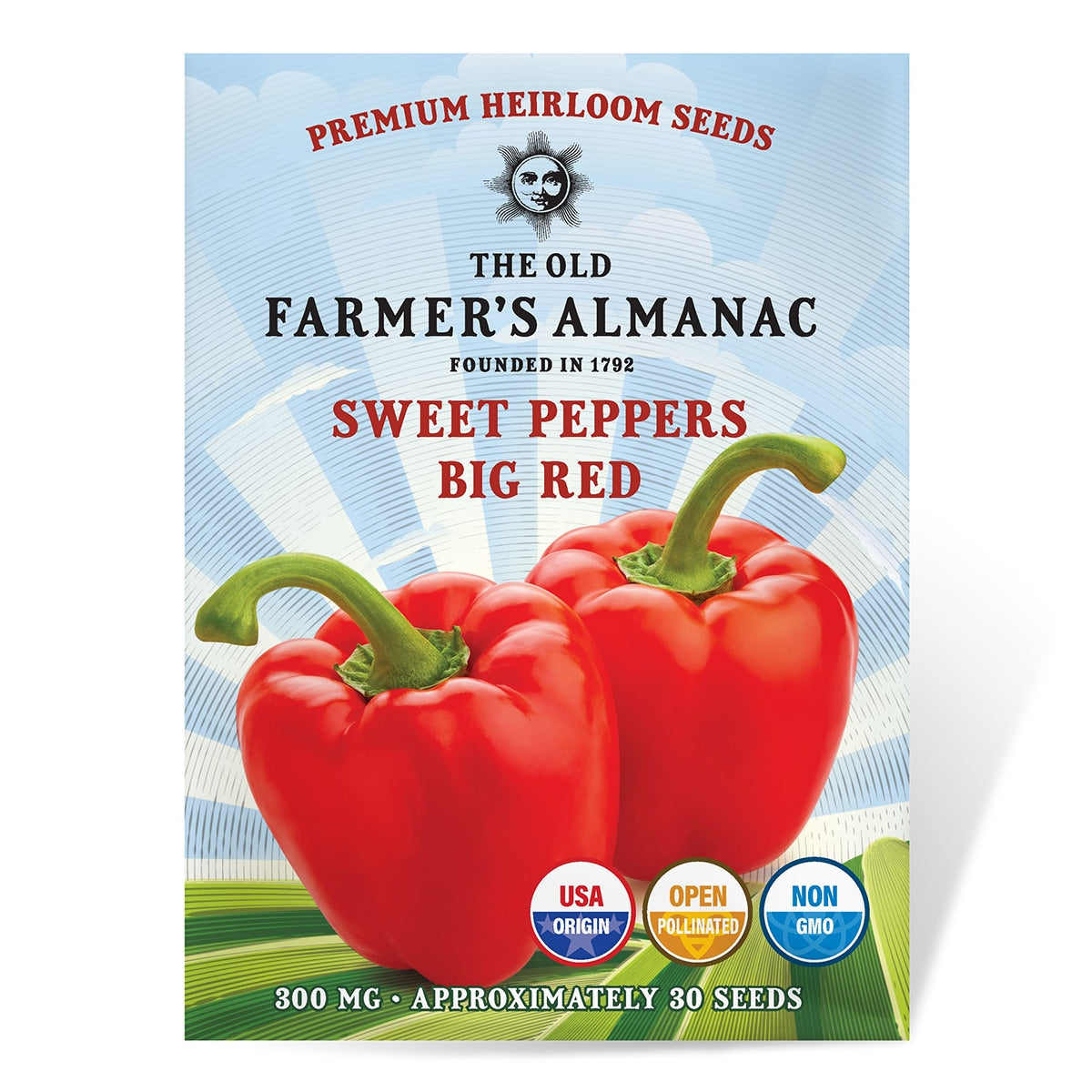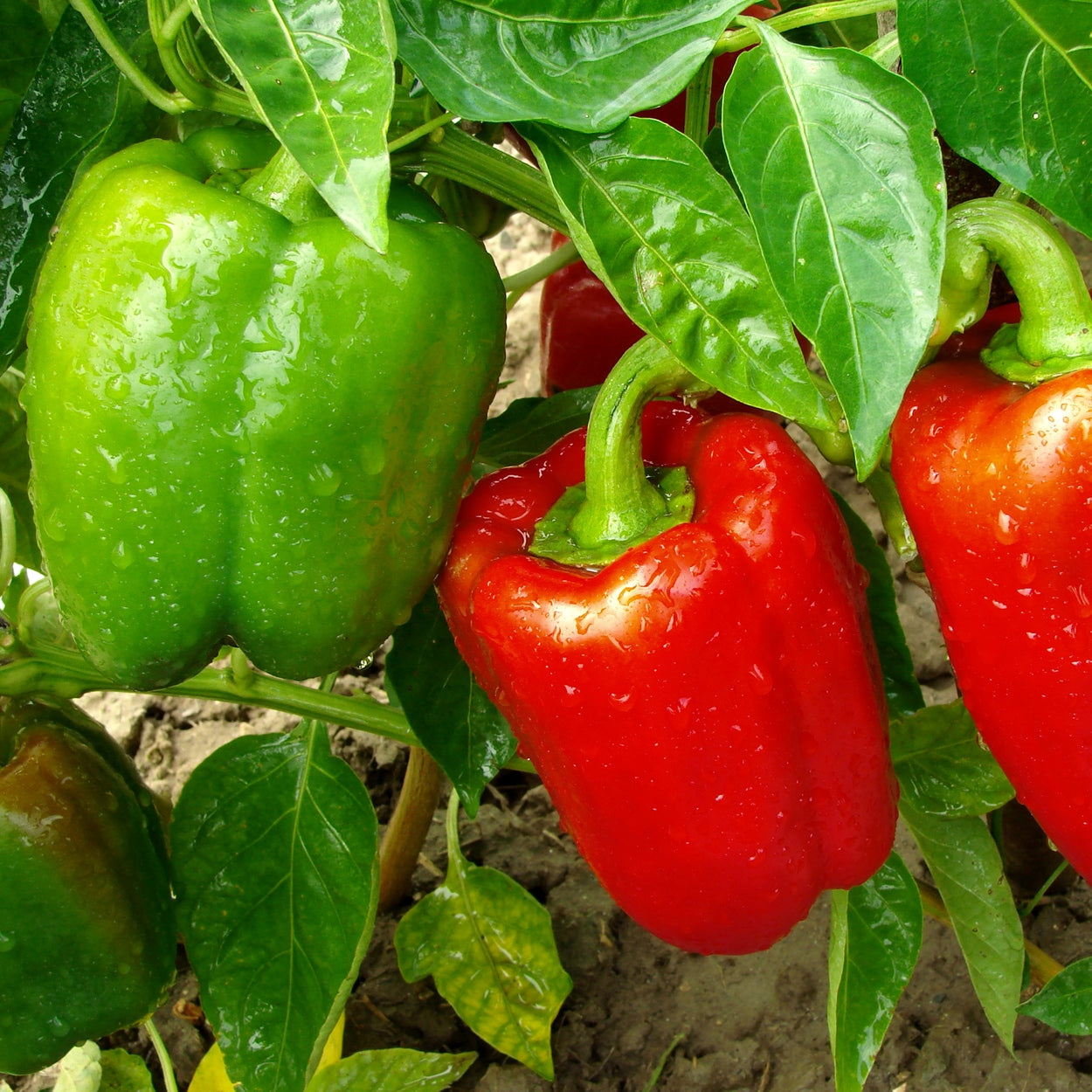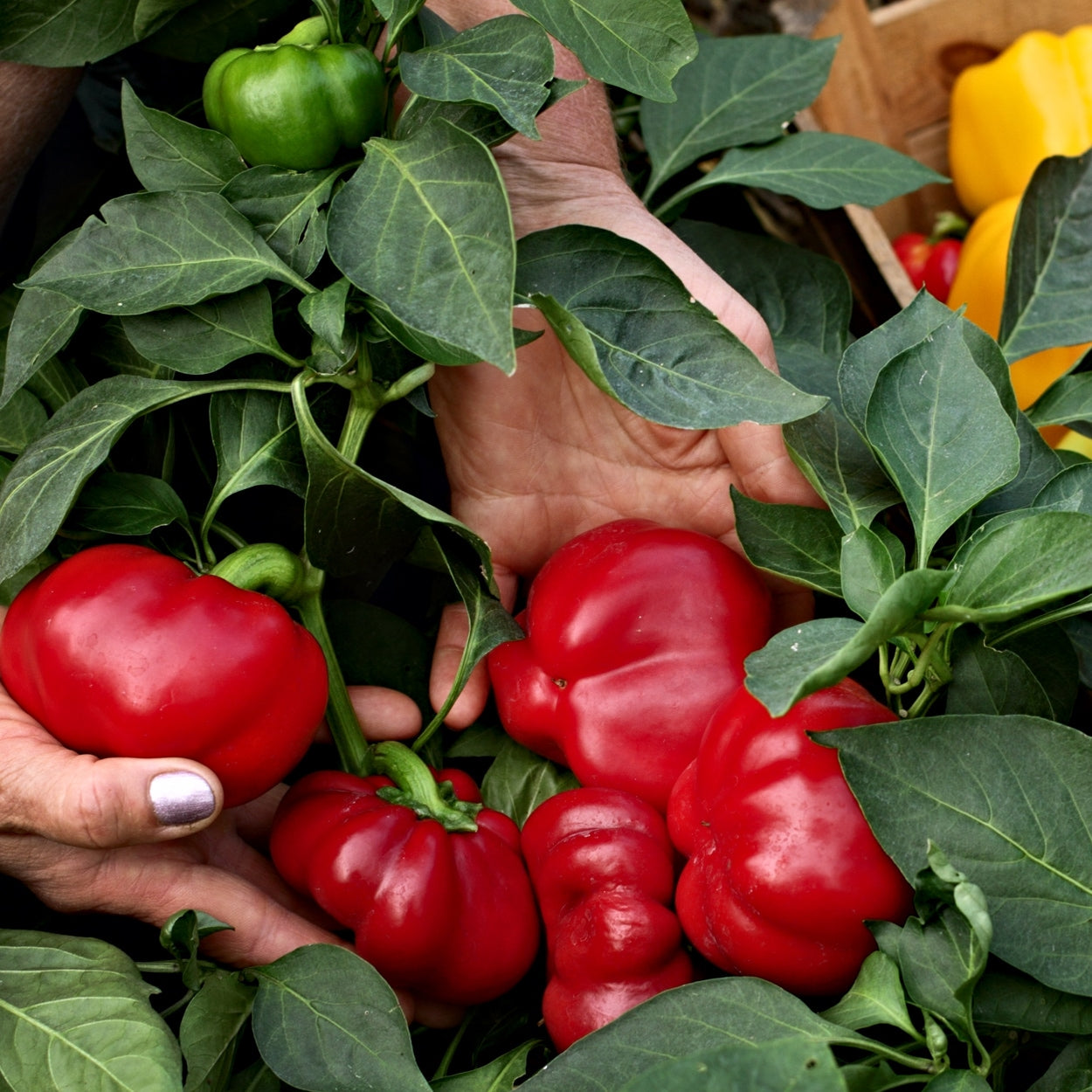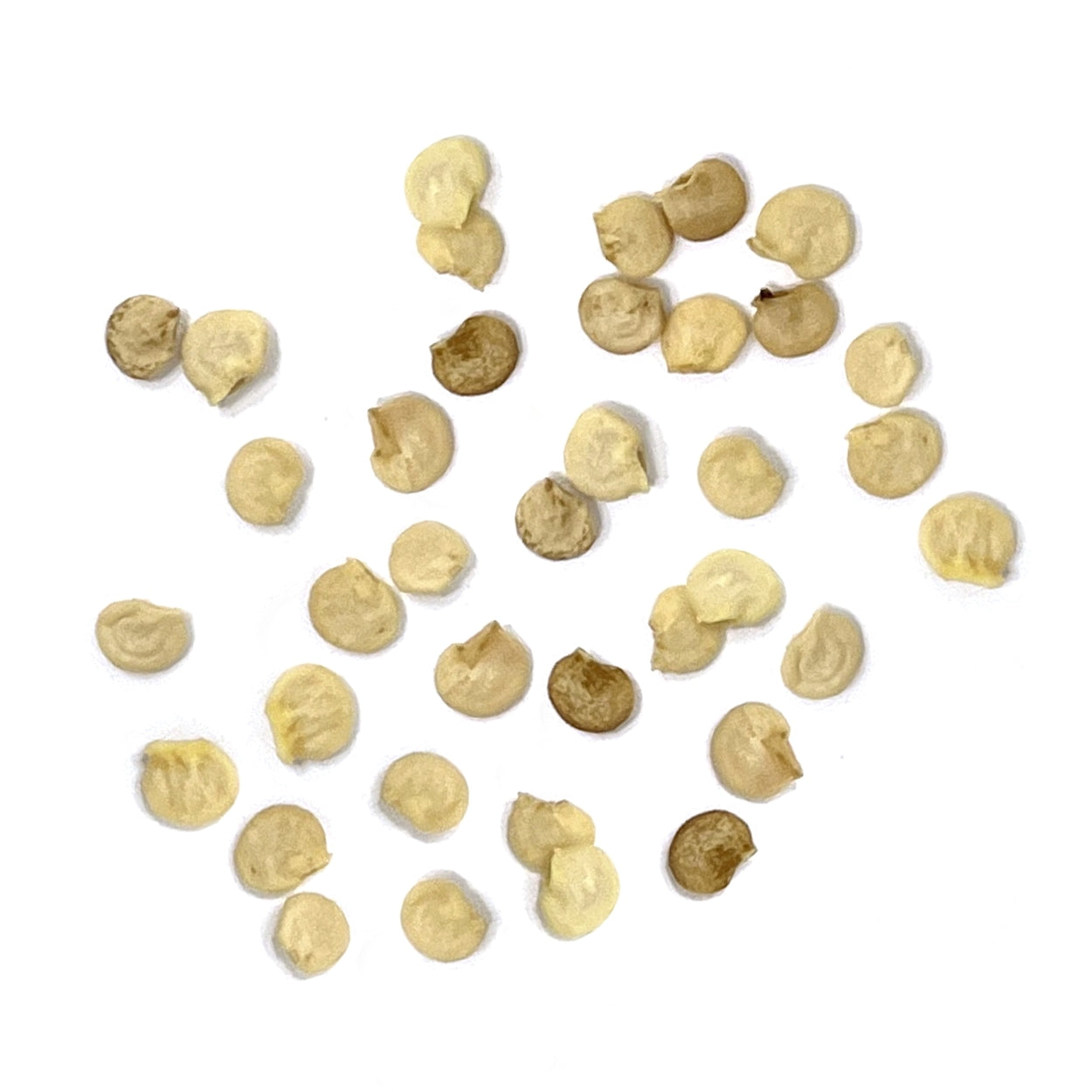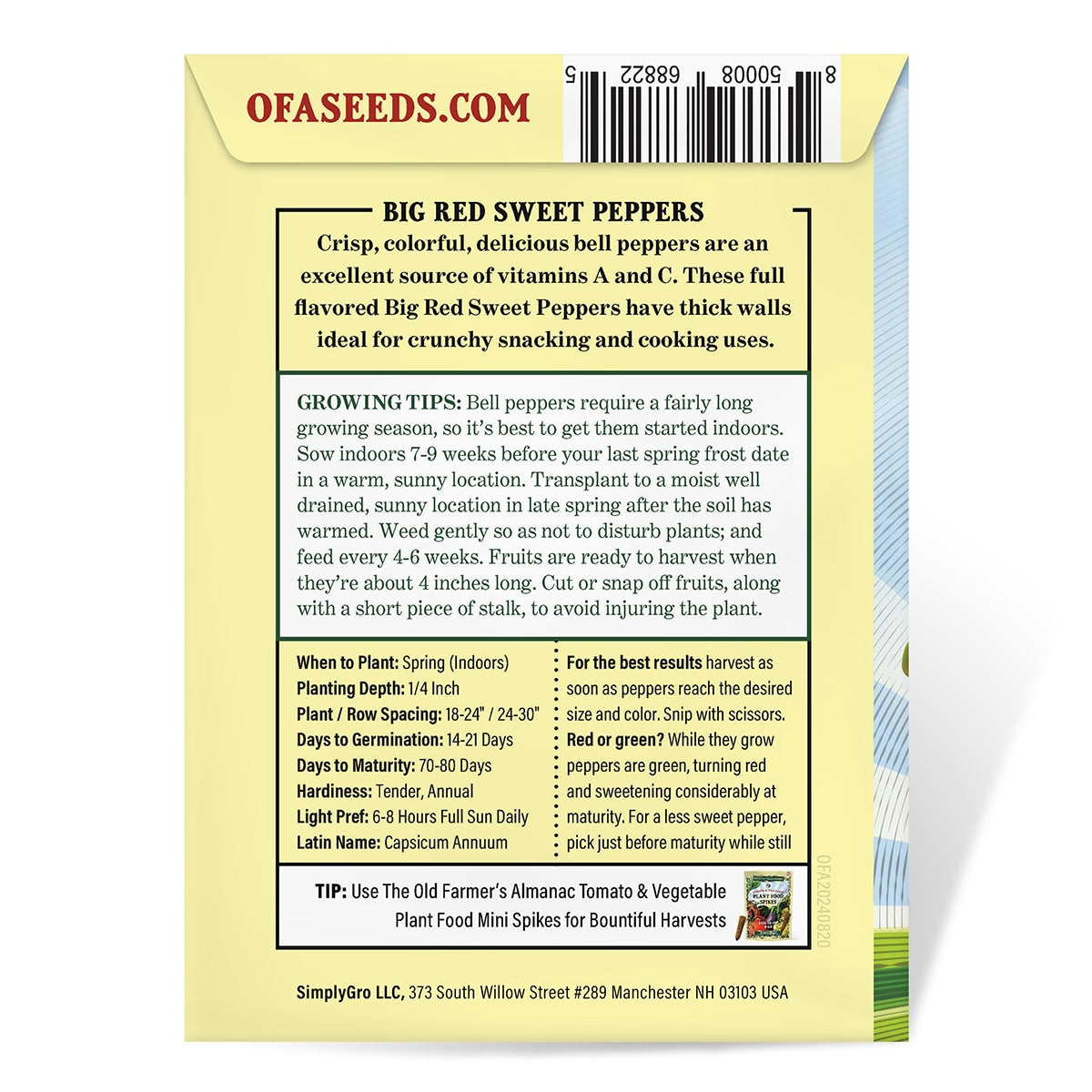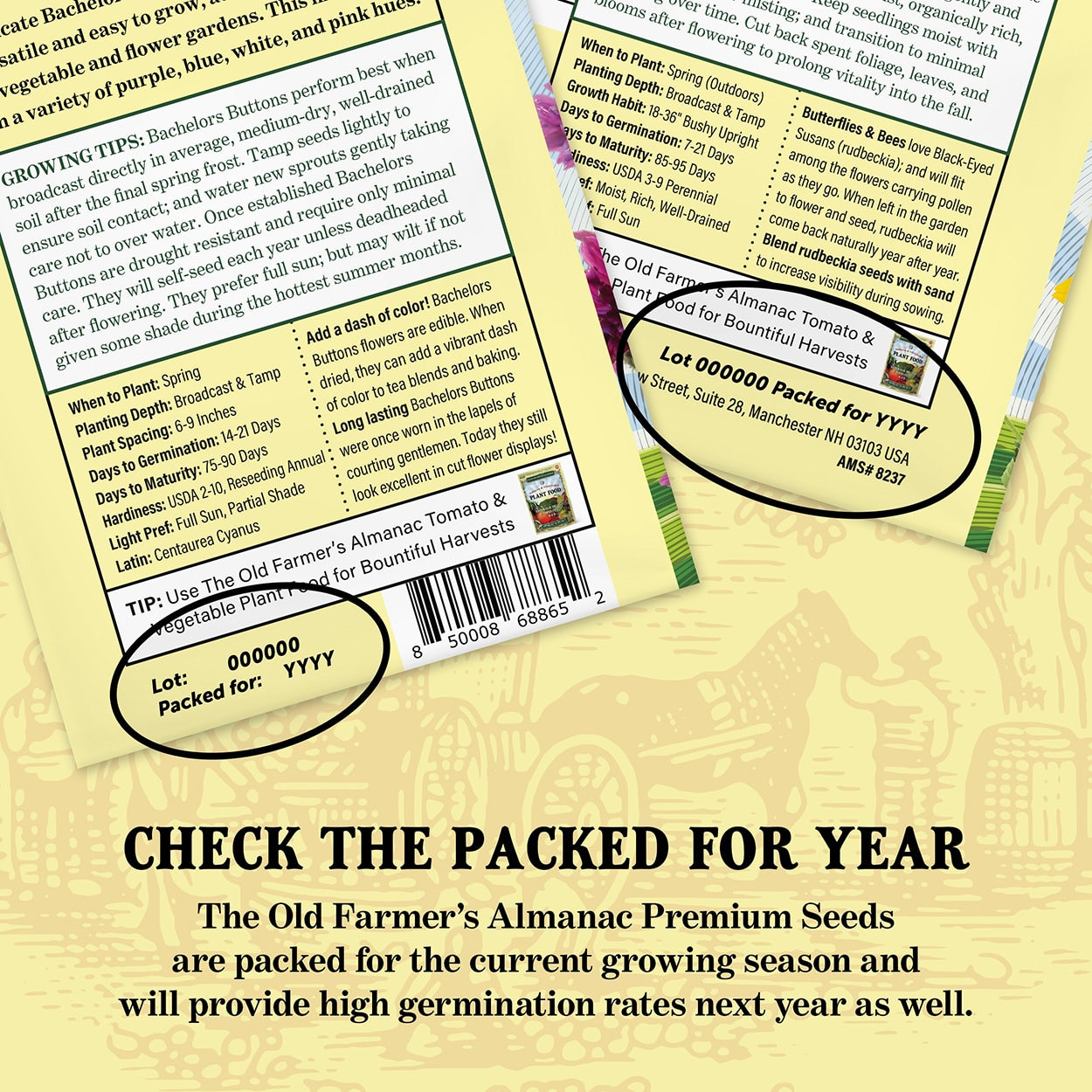Solanales
The Old Farmer's Almanac Heirloom Big Red Sweet Pepper Seeds
The Old Farmer's Almanac Heirloom Big Red Sweet Pepper Seeds
Couldn't load pickup availability

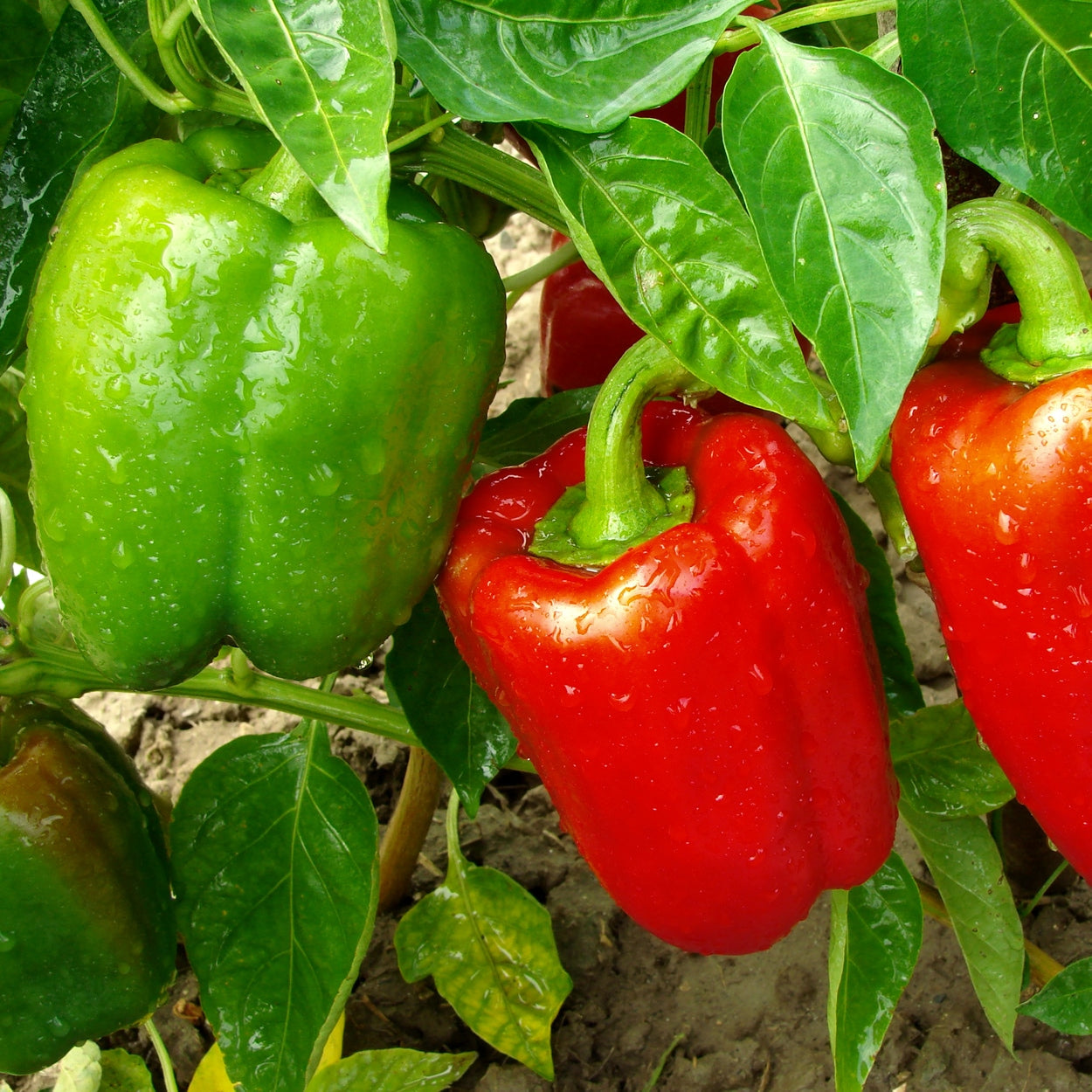




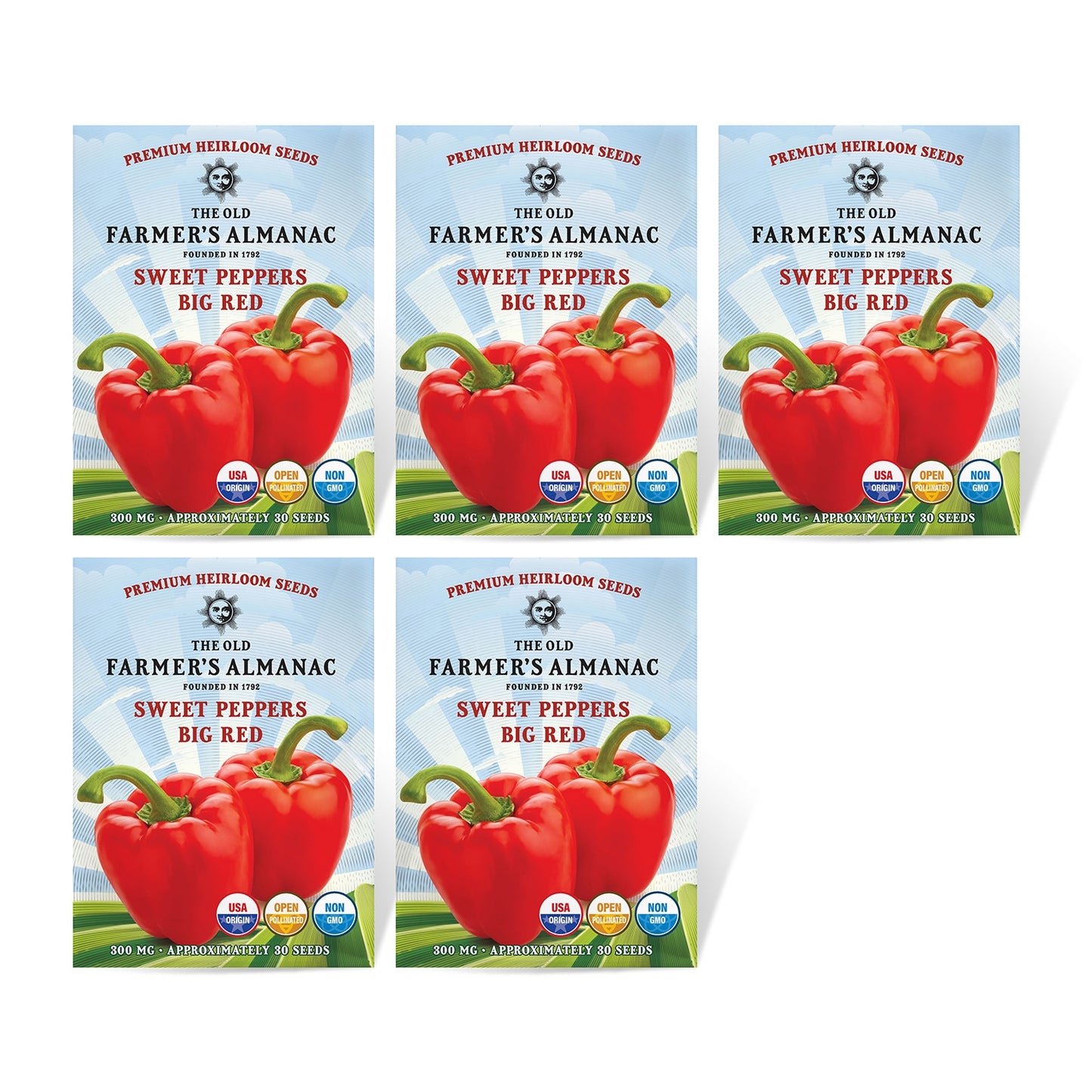
Collapsible content
DESCRIPTION
Freshly Packed: These seeds are packed for the current growing season and will provide high germination rates next year as well.
Premium Packaging: All seeds from The Old Farmer’s Almanac are packaged in individually styled packets ideal for gifts, storage or immediate use. Each packet displays the flower, vegetable, plant or herb variety on the front with instructions and plant facts on the back.
GROWING TIPS
Bell peppers require a fairly long growing season, so it's best to get them started indoors. Sow indoors 7-9 weeks before your last spring frost date in a warm, sunny location. Transplant to a moist well drained, sunny location in late spring after the soil has warmed. Weed gently so as not to disturb plants; and feed every 4-6 weeks. Fruits are ready to harvest when they're about 4 inches long. Cut or snap off fruits, along with a short piece of stalk, to avoid injuring the plant.
For the best results harvest as soon as peppers reach the desired size and color. Snip with scissors.
Red or Green? While they grow peppers are green, turning red and sweetening considerable at maturity. For a less sweet pepper, pick just before maturity while still green.
Wit & Wisdom: There is a popular myth which states that pepper fruits can be either male or female -- the difference between them being that male peppers have 3 bumps on the bottom and are better for cooking, while female peppers have 4 bumps, have more seeds, are sweeter, and are better for eating raw. This is not true! Pepper fruits do not have a gender and any obvious difference between fruits is simply the result of growing conditions or variety. Read The Old Farmer's Almanac Bell Peppers Growing Guide!

